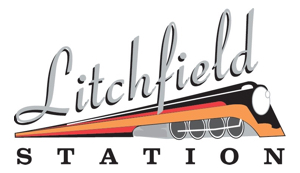There are two characteristics of decoders that have a major effect on your locomotive's performance. They both deal with how the decoder actually talks to the motor. Let's chat a bit about them now.
Early on, these were features of the high-end decoders. They are on most decoders now. But it helps to understand what they do.
Some decoders are designed to sense the motor's intrinsic ability to function as a generator to know what speed the motor is running.
When you are running at less than full speed, the decoder only has the powerturned on to the motor part time (roughly the percentage of full speed that you are running).
The decoder senses the BEMF generated at less than full speed and adjusts the following pulse lengths to compensate for changes in the motor speed.
Note that nothing in this relates in any way to how fast the pulses are being applied (i. e. whether the decoder is normal or high frequency - with or without Dither).
The response time and memory of the BEMF system determines whether it is an "auto goose" to help the loco past stiction (motor starting frition), a binding mechanism or tight track work issues (short time constant) or "cruise control" to keep the train running at the same speed uphill and down.
One BEMF item which is NOT frequently discussed is the number of bits of resolution. Lenz, as an example, uses a 12 bit system, which will allow the decoder to sense speed variations as small as 0.02%. Other manufacturers may be as coarse as 8 bits (0.3%). The more bits, the smoother the control.
DCC decoders pulse (turn on and off) the power to the loco motor - the longer the pulses, the faster the motor runs. Full voltage is always applied.
Early decoders did this at a low frequency (well in the range of human hearing) which made the motor jerk at the drive frequency and harmonics of it. Many would sing as well. Manufacturers provided drive frequency adjustments to minimize these issues.
Then came high frequency drive which operates the decoder beyond the upper limit of human hearing and well beyond any mechanical resonant frequencies. (called Silent Running, Quiet Drive, SuperSonic, etc. by various manufacturers.) It fixed the singing and jerking.
However, a new problem entered - reduced torque at low throttle settings. Several manufacturers came up with a method to compensate for this loss of torque and called it simply torque compensation. TCS called it dither and that moniker stuck. This is a bit like taking one drug to counteract the adverse effects of another!
Some, manufacturers, like TCS and NCE, provide some adjustments for their torque compensation. Others, like Digitrax, just allow you to turn it on or off. Check the manual for your decoder to see what options you have and which CVs control what. Or use DecoderPro to guide you through the maze.

